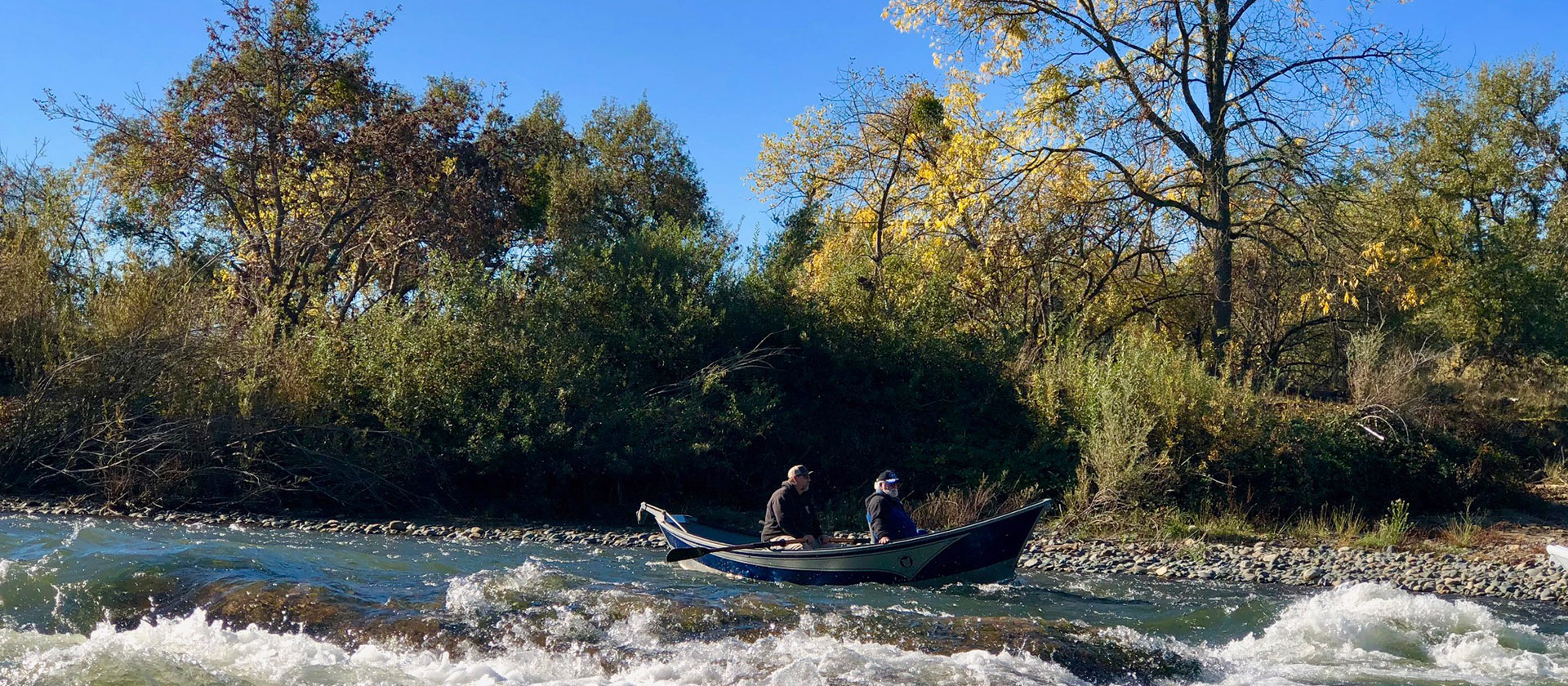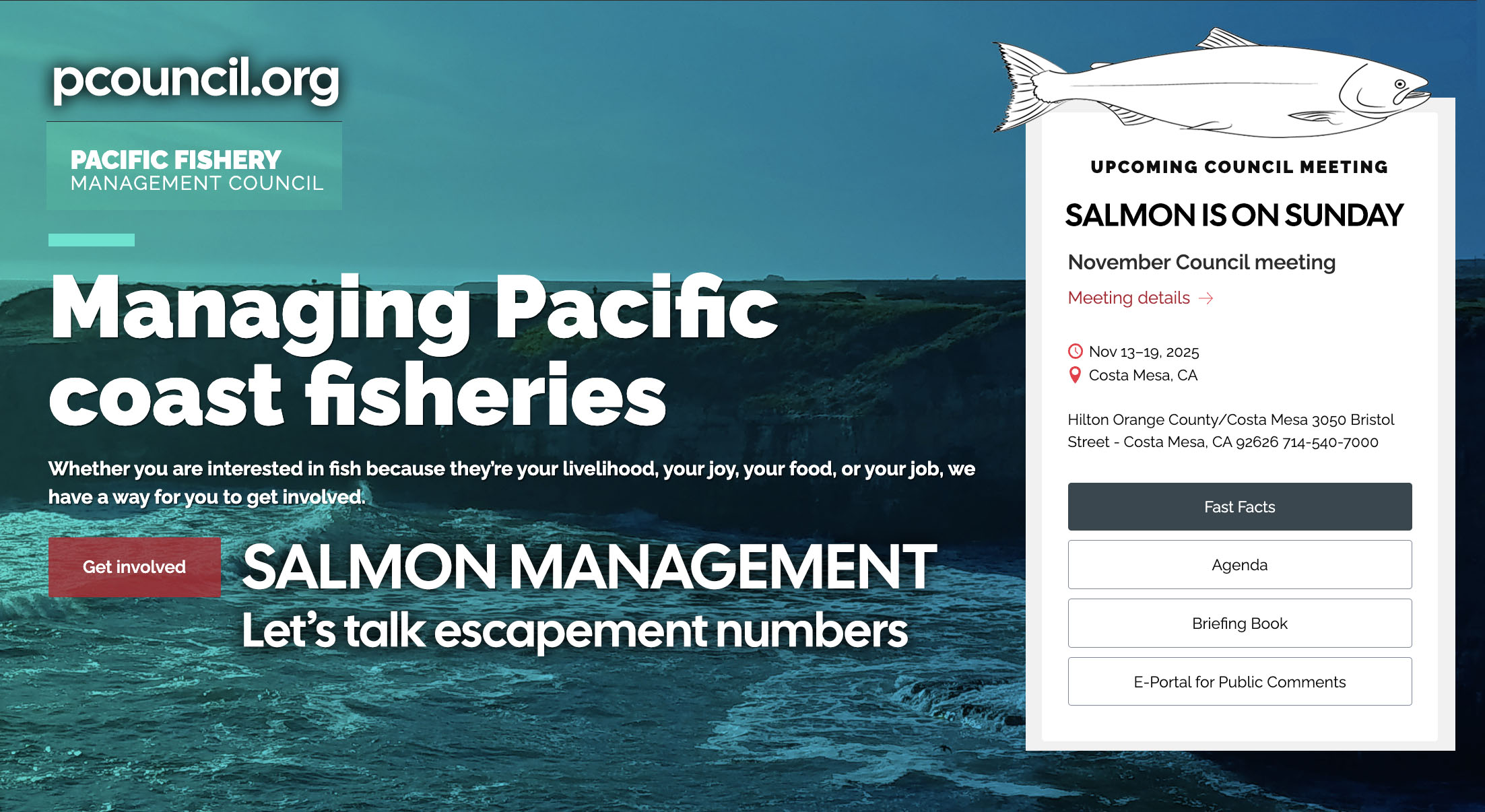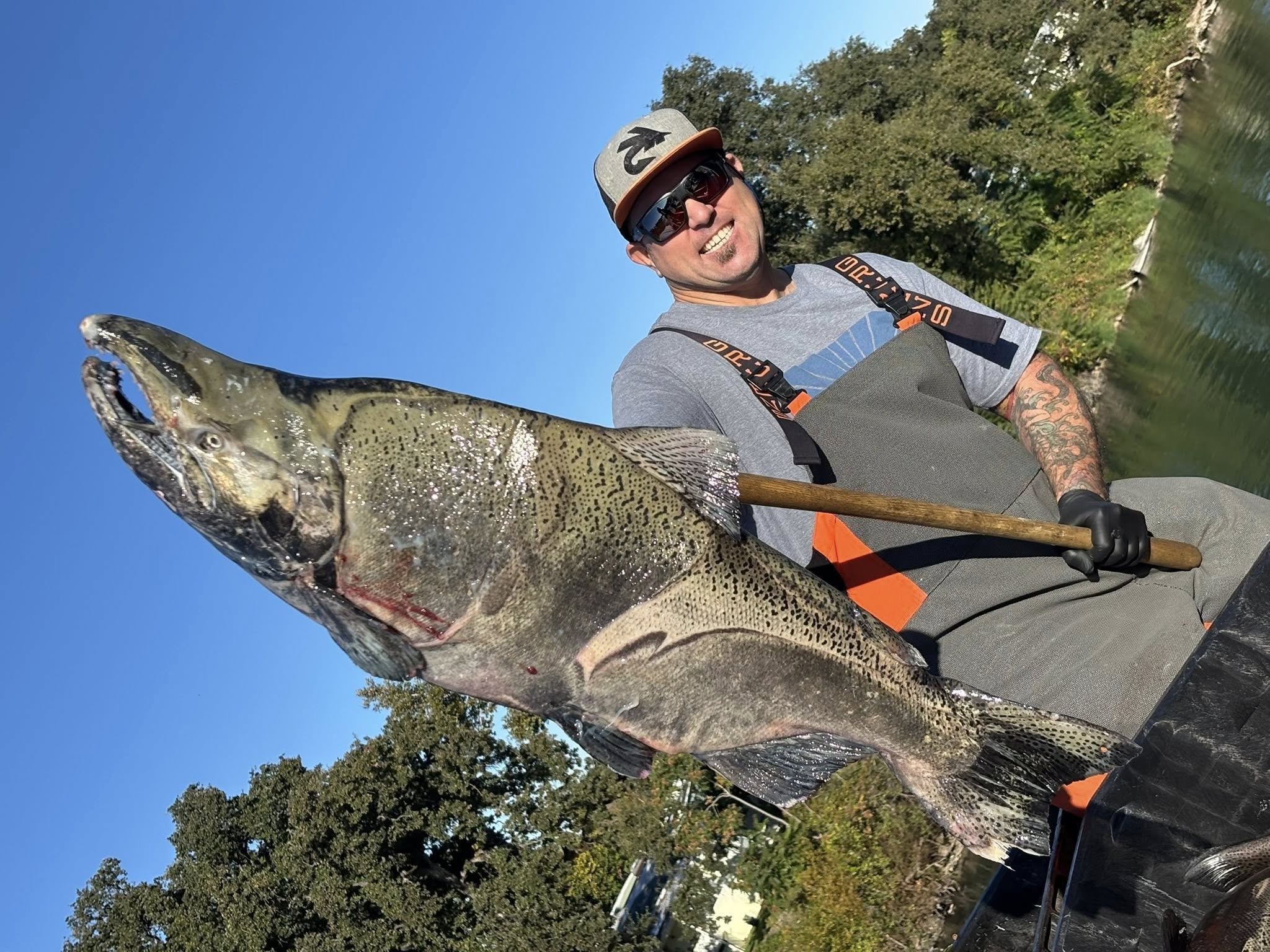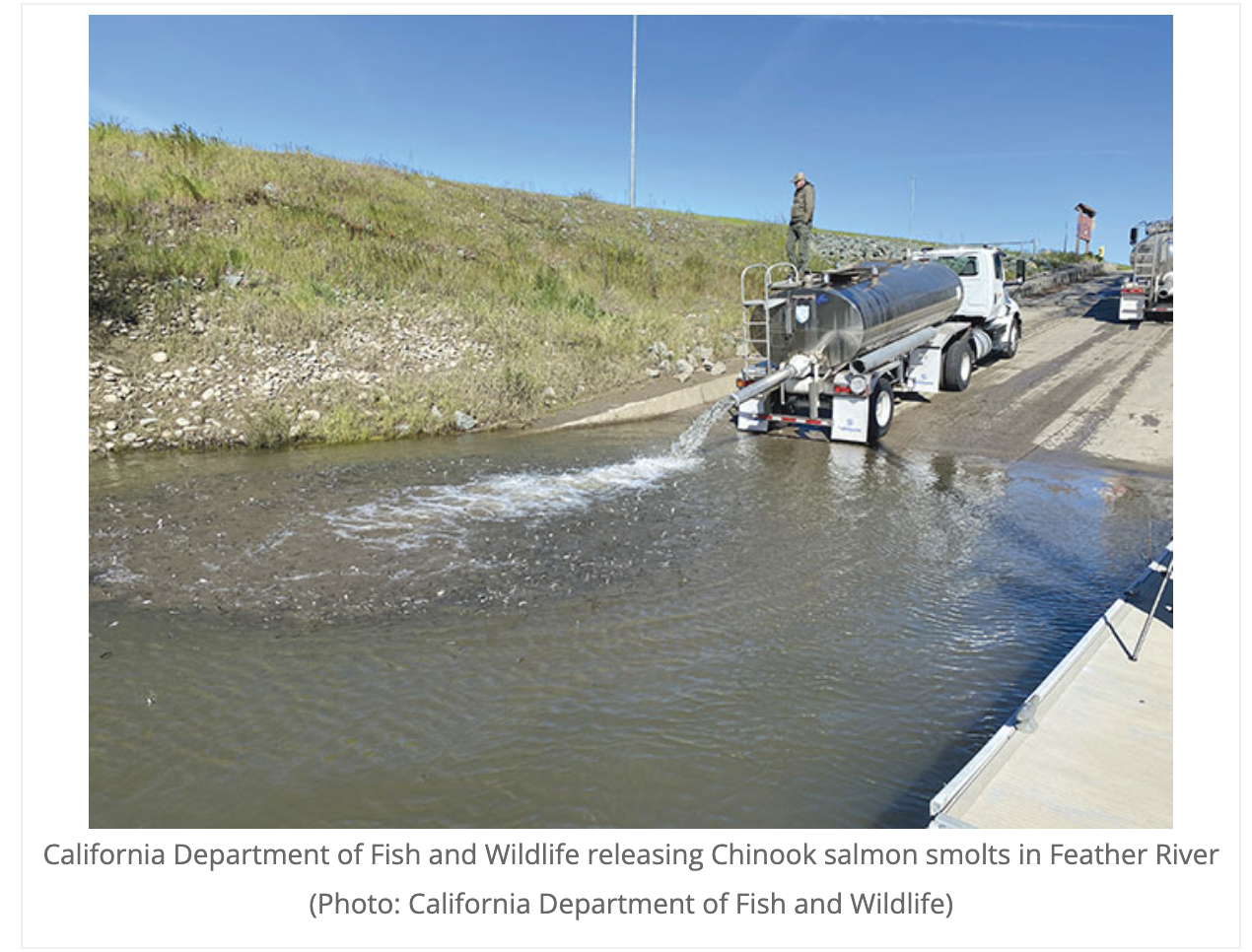CDFW Partners with DWR and Fishing Industry to Diversify Salmon Hatchery Release Strategies
from CDFW News/Press Release
February 6, 2025
In a collaborative effort to increase the sustainability of California’s salmon populations, the California Department of Fish and Wildlife (CDFW) has partnered with the Department of Water Resources (DWR), as well as ocean and inland fishing groups to continue a pilot project aimed at diversifying salmon hatchery release strategies.
As part of a broader initiative to expand salmon hatchery release strategies, CDFW recently released more than a million fall-run Chinook salmon fry into the Feather River. These salmon fry are released shortly after hatching, which mimic the same life stage in the wild when they would swim up out of the gravel. Typically, fall-run Chinook salmon released from the hatchery are about six months old and 3.5- to 4-inches in length. This technique was first introduced at the American River at the Nimbus Fish Hatchery in 2023.
This marks the second fry release in the Feather River this year, bringing the total number of fry released to approximately 1.8 million. These releases are in addition to the Feather River Hatchery’s typical target of 6 million smolts (a young salmon that is ready to migrate from freshwater to the ocean, usually around 6 months old) as well as the additional 3.5 million smolts and sub-smolts CDFW aims to produce at the Feather River Hatchery in 2025.
“This pilot project underscores the importance of collaboration between state agencies and the fishing community as we adapt to the challenges posed by climate change,” said Jay Rowan, Fisheries Branch Chief. “By diversifying hatchery release strategies, we aim to boost salmon populations while ensuring more fish are available for both harvest and conservation efforts.”
Due to the small size of salmon at the fry stage, traditional tagging methods such as coded wire tags cannot be used to track these fish. Instead, the performance of these releases will be monitored using Parental Based Tagging (PBT). This innovative approach involves collecting genetic data from the parent salmon at the time of spawning at the hatchery. The genetic information will then be used to identify and track the offspring when they return to the river, helping to assess the success of the fry releases.
“Our organization has long been an advocate of adopting genetic PBT for fisheries management,” said James Stone, Executive Director of the NorCal Guides and Sportsmen’s Association. “Adaptive salmon management is the future of improving and sustaining our fishery, which is needed now more than ever. PBT provides flexibility in hatchery operation and release strategies to maximize juvenile salmon production, including the promotion of natural spawning. We are pleased to partner with the department on the implementation of this new technology and commend them for taking this next step.”
The fry release project is being conducted in coordination with DWR, which owns the Feather River Hatchery, and with input from both commercial and recreational salmon fishing groups.
“On behalf of the California salmon fleet, the Pacific Coast Federation of Fisherman’s Association (PCFFA) is committed to restoring our fleet’s ability to harvest California salmon and feed California communities. Diversified release strategies offer the best opportunity for a cohort’s success by mimicking natural systems, allowing fish to learn to be fish sooner. This approach provides hope that bold and decisive actions can strengthen population health, enhance genetic diversity, and contribute to the long-term resilience of salmon stocks,” said George Bradshaw PCFFA President. “We appreciate CDFW’s collaboration with the industry to address the salmon crisis by increasing hatchery production and implementing diversified early life stage release strategies. Reintroducing fry releases not only expands production capacity but also takes advantage of early in-river conditions that benefit fish health.”
Diversifying hatchery release strategies is a key element of the California Salmon Strategy for a Hotter, Drier, Future, a statewide initiative aimed at ensuring the resilience of salmon populations amid impacts of climate change. In addition to the Feather River releases, similar pilot studies are also underway at the Nimbus Hatchery on the American River, further expanding the scope of the project.
The pilot studies are expected to provide valuable data that will shape future hatchery release strategies, ultimately helping to bolster salmon populations and improve their chances for survival in the wild.
For more information on this project and other salmon conservation efforts, visit the CDFW website at www.wildlife.ca.gov.
###
Media Contacts:
Jay Rowan, CDFW Fisheries Branch Chief
Steve Gonzalez, CDFW Communications, (916) 804-1714








